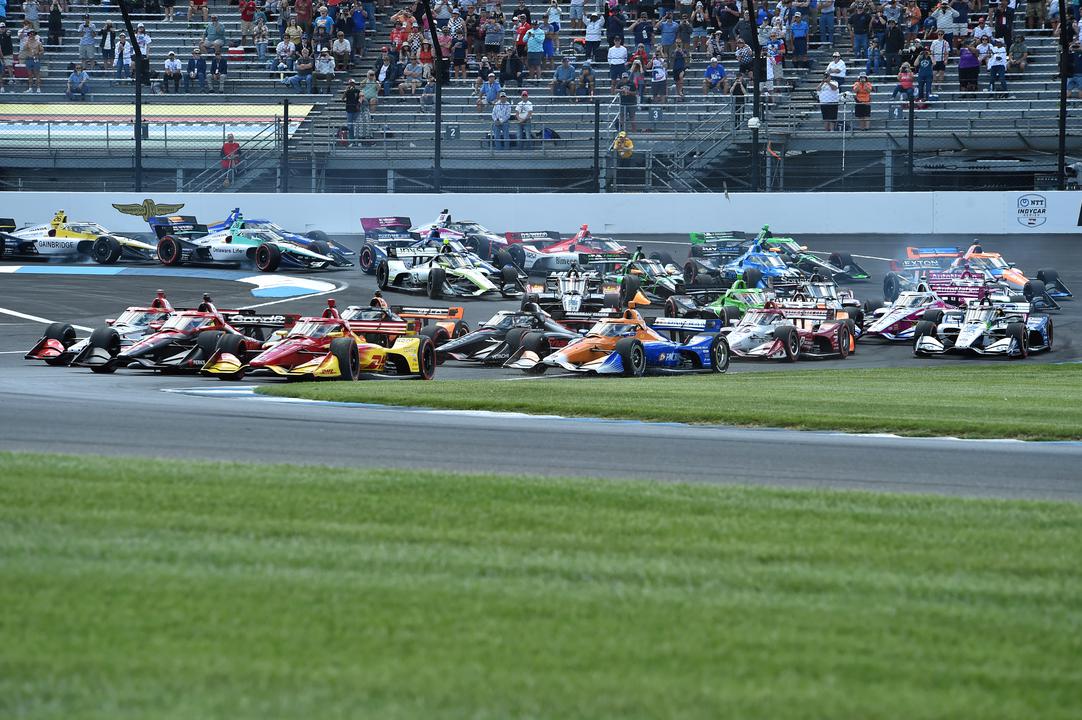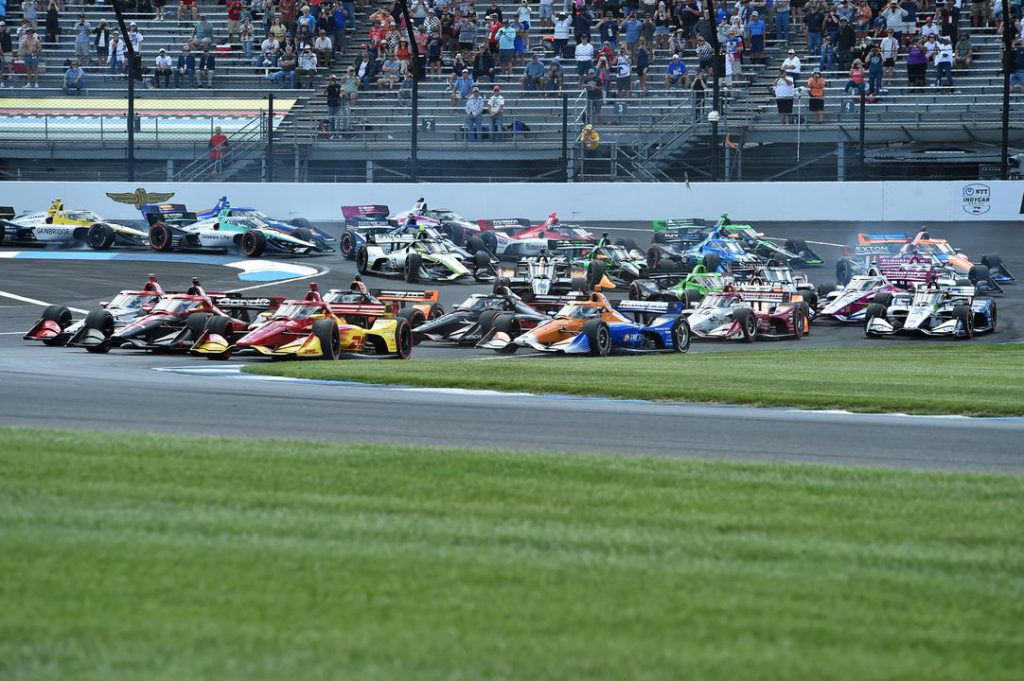

The introduction of hybrid technology to the category has been delayed three times, having first been slated to occur in 2022.
Last December, the 2024 debut was pushed back to an otherwise unspecified point after this month’s Indianapolis 500, but has now been confirmed for the weekend of July 5-7.
The system is comprised of a low-voltage (48V) Motor Generator Unit (MGU) and Energy Storage System (ESS), consisting of 20 ultracapacitors, both of which fit inside the bellhousing, located between internal combustion engine and the gearbox.
During regeneration, acting on the clutch shaft, the MGU builds power to be stored in the ESS. The additional horsepower is deployed through the same motor generator.
Regeneration will be available automatically via braking or throttle position, or manually through selected steering wheel paddles and buttons.
Deployment is manual only, through a latching button, similar to the existing push-to-pass system.
The energy from hybrid power will be available on top of the existing push-to-pass, although different rules will apply.
Push-to-pass remains time-restricted, per application and total per race, while the amount of hybrid energy is limited per lap, based on track length.
According to IndyCar, when used in combination on road and street circuits, the added boost will provide an additional 120 horsepower for a total of over 800 horsepower.
“Additional horsepower is expected in the coming years as hybrid unit development evolves,” claimed the category in its announcement.
“The strength of this uncharted partnership between Chevrolet and Honda has pushed this innovative project to the grid in 2024,” said IndyCar President Jay Frye.
“The IndyCar-specific hybrid power unit will bring a new and exciting element to the NTT IndyCar Series with additional energy and overtake options.
“We cannot wait to see the start of this new era at Mid-Ohio.”
General Motors Executive Director, Motorsports Competition Eric Warren said: “The introduction of hybrid technology provides an opportunity to integrate electrification technologies into the NTT IndyCar Series.
“During the development of any new technology, extensive analysis and testing are done to identify as many issues as possible.
“We support IndyCar’s decisions throughout this process to study testing data carefully and make sure that when the hybrid technology is integrated, the operation and performance are exactly what is expected.
“This approach has given IndyCar and the engine manufacturers the opportunity to ensure the high level of competition continues uninterrupted.”
Honda Racing Corporation USA President David Salters remarked: “Hybrid technology is playing an ever-increasing role in both our racing programs and the production vehicles created by Honda and Acura.
“More than a quarter of Honda’s total sales in 2023 – nearly 300,000 vehicles – were Honda CR-V and Accord hybrids.
“Introducing electrification to IndyCar at Mid-Ohio further aligns our racing efforts with Honda’s passenger car production as we operate multiple manufacturing and R&D facilities in central Ohio, employing more than 13,000 associates there.
“This is exciting new technology and, like all things new, has presented challenges to us at HRC as we have stepped in with our competitors to help IndyCar make the hybrid system compact enough, powerful enough, light enough and reliable enough to work within the highly-restricted confines of an IndyCar chassis.
“We are proud of our associates’ work to develop the supercapacitor pack and control software for the system.
“We look forward to hybrid tech adding another dimension to the great racing spectacle and entertaining our great Honda and IndyCar racing fans.”
The hybrid system will have another impact on the sporting contest, given it provides drivers the ability to restart their own cars and hence prevent Cautions.
A full-field test with the new power unit is scheduled for Tuesday, June 11 at the Milwaukee Mile.





















Discussion about this post